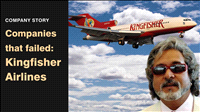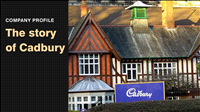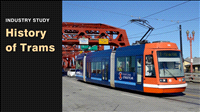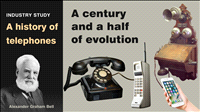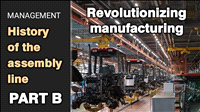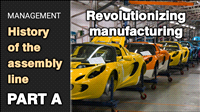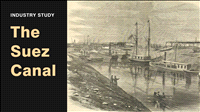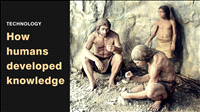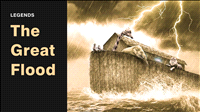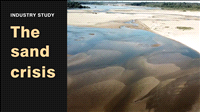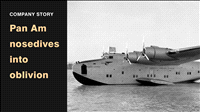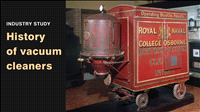The story of Cadbury | Company Profile | Business History
By Kiron Kasbekar | 02 Nov 2023
Today’s video is about the history of a brand we are all familiar with. And not just familiar with – one of those brands we have all consumed at one time or another. It’s Cadbury.
When we were children, when someone mentioned the word ‘Cadbury’ our eyes would light up, and there would be a spring in our steps. We liked all kinds of sweets. But there was this special thing in our hearts for Cadbury chocolates. Now there are more brands in the market; but I don’t know if there is any chocolate brand, at least in India, that has a higher recall value than Cadbury or one of its sub-brands.
In the past we only had Cadbury milk chocolates. Although Cadbury had more than a handful of rivals, they weren’t visible in India. Cadbury was the most affordable chocolate then. It still is, compared to other European or American brands.
But some Indian brands have overtaken it, and other, smaller brands have cropped up in the market. The most formidable Indian brand is Amul. I have created a separate video on Amul; so I will not say more about it here.
So let’s get on with the Cadbury history.
The story of Cadbury, one of the world’s most iconic confectionery companies, began nearly two hundred years ago. The year was 1824. The company does not now exist as an independent entity, having merged with Kraft, which changed its name to Mondelez International. But the Cadbury brand survives to this day.
So this is one brand that has lasted for nearly two centuries! How many brands do you know that have lasted this long?
Companies that began two centuries ago have, by and large, become big. And so did the Cadbury brand.
But everything that grows big starts small. And so did Cadbury.
The history of Cadbury began in a small shop in Birmingham, in England, and the company grew bigger by the day.
In this video, we’ll look at the key milestones and developments in Cadbury’s illustrious history leading up to the year 2010.
The Birth of Cadbury (1824-1860)
The Cadbury journey commenced in 1824 when John Cadbury, a Quaker, opened a small grocery store in Bull Street, Birmingham, England.
Quakers, incidentally, are a sect of people with a population of roughly half a million in Britain, America and Kenya, who believe in god but not in any priesthood. There are also atheist Quakers who do not believe in god but believe in the power of love and compassion, and the importance of social justice.
So, John Cadbury who was a Quaker, and his family was against slavery and campaigned for its abolition. Basically, he was someone with a social conscience.
And you know one of the reasons why John began selling drinking chocolate in his grocery store in 1824 was that he hoped that drinking chocolate would be an alternative beverage to alcohol.
The Cadbury store primarily sold tea, coffee, and drinking chocolate, which John personally prepared using a pestle and mortar. What set Cadbury apart from other shops of the era was its commitment to the purity and quality of its products. He refused to sell alcoholic beverages, which was a common commodity in many grocery stores of the time.
His concern was that alcoholism led to poverty when people couldn’t work. When he was ready to retire, 35 years later, he devoted himself to social causes after handing over the business to his sons.
In 1831 he had begun making a variety of cocoa and drinking chocolates, in a factory in Bridge Street in Birmingham. These were sold mainly to the wealthy because of the high cost of production.
Then, in 1847, John’s brother Benjamin joined the business, following which the firm became known as ‘Cadbury Brothers’.
But Cadbury was a latecomer to the scene. Rival J. S. Fry & Sons, better known as Fry’s, had launched its chocolate around 1759, and produced several products. An even later entrant than Cadbury was Rowntree’s, maker of KitKat chocolates, which was founded in 1862.
In 1849 Cadbury launched its first chocolate bar. The brothers opened an office in London to expand sales. Sales declined. But a saving grace was that in 1854 Cadbury was designated as producers of chocolate and cocoa for Queen Victoria.
The decline continued till the late 1850s. The number of Cadbury employees dropped from 20 to 11, and the business made losses.
John retired in 1861, after his wife died, and his sons, Richard and George, took over the family business.
The sons turned around the business; and by 1866 Cadbury began to make profits again. What Richard and George did was to shift the firm’s focus from tea and coffee to chocolate; they also improved the quality of their products.
Richard and George expanded the business multifold. The demand for cocoa was growing, not least because of the promotions done by John Cadbury. So they decided to move the company to a larger factory in Bournbrook, Birmingham.
This marked the beginning of Cadbury’s transformation from a retailer to a manufacturer of chocolate products.
Cadbury began to export its chocolates in the 1850s. In 1861, it began to sell decorated boxes of chocolates, and, in 1868, it introduced heart-shaped boxes of chocolates for Valentine’s Day. These were a big hit.
In 1866 the Cadbury brothers made a big breakthrough when they introduced an improved cocoa into Britain. The Dutch had developed a new cocoa press that removed some of the unpalatable cocoa butter from the processed cocoa beans. Cadbury acquired this process to improve its products.
In 1875 Cadbury launched its first Easter egg, made with a pure cocoa butter that enabled molding the products into different smooth shapes. By the year 1893, the company had as many as 19 different varieties of chocolate Easter eggs on sale.
Then, in 1878, Richard and George Cadbury decided to shift production to the countryside 6.4 km from Birmingham. It was a smart move. With it, the factory gained better access to milk, which was brought in by canal, and cocoa, which was brought in by rail from the London, Southampton and Liverpool docks.
With the development of the Birmingham West Suburban Railway, the brothers acquired the 14.5-acre Bournbrook estate in the countryside south of Birmingham. They renamed the estate Bournville, and opened the Bournville factory in 1879.
In 1891, the Cadbury brothers filed a patent for a chocolate-coated biscuit. At the Bournbrook factory, Cadbury introduced various innovative cocoa products, including ‘Cadbury Cocoa Essence’. This pure cocoa product served as the foundation for many of Cadbury’s future chocolate recipes, setting a high standard for quality and taste.
In 1893, George Cadbury bought 120 acres of land close to the works and planned, at his own expense, a model village which would ‘alleviate the evils of modern more cramped living conditions’.
By 1900, the estate included 314 cottages and houses set on 130 hectares of land. As the Cadbury family were Quakers, there were no pubs in the estate.
Cadbury’s business philosophy was also reflected in its approach to employees. The company’s dedication to the well-being of its employees became evident quite early in its history. The company established a pension fund for its workers in 1879, which was a progressive move in an era when such benefits were rare.
Cadbury went one step further. In 1893, the company built the Bournville model village for its workforce. Bournville featured comfortable housing, green spaces, and recreational facilities. Thus Cadbury set an example for corporate social responsibility it would be renowned for.
In 1897, following the lead of Swiss companies, Cadbury introduced its own line of milk chocolate bars. In 1899, Cadbury became a private limited company.
The Cadbury Brothers and Dairy Milk (1871-1905)
The late 19th century witnessed the emergence of Richard and George Cadbury’s vision for the company. In 1897, Cadbury introduced its first milk chocolate bar, a groundbreaking achievement in the chocolate industry. This product innovation marked the beginning of the legendary Cadbury Dairy Milk brand, which would become synonymous with creamy, high-quality milk chocolate.
Dairy Milk quickly gained popularity, revolutionizing the chocolate industry by making premium milk chocolate accessible to the masses. The distinctive purple packaging that accompanied Dairy Milk bars became an enduring symbol of Cadbury.
During the First World War Cadbury supplied chocolate to the troops, which not only helped give them some quick nourishment, but also, it is said, maintained morale on the front lines.
During the 1930s, Cadbury established the Cadbury Foundation, focusing on charitable endeavors and community support. The Second World War posed significant challenges as rationing affected chocolate production. But Cadbury continued to support the war effort by producing ration chocolate and cocoa for soldiers, and thus claimed to have made its contribution to the collective resilience of the British nation.
After the war, Cadbury expanded its international footprint, opening factories in Australia and New Zealand to meet the growing global demand for its products. This expansion solidified Cadbury’s reputation as a global chocolatier. The company launched its Dairy Milk chocolates in India in 1948.
Post-War Growth and Innovations (1950s-1960s)
The post-war period ushered in a resurgence of growth and innovation for Cadbury. In 1958, Cadbury introduced Picnic, a popular chocolate bar combining nuts, nougat, and caramel, followed by Crunchie in 1960, known for its honeycomb toffee center. The company’s international expansion continued as it opened new factories around the world.
In 1969, Cadbury merged with Schweppes, forming Cadbury Schweppes. This strategic move diversified the company’s portfolio to include both confectionery and beverages, further solidifying its presence in the global market.
The 1970s and 1980s marked a period of innovation and diversification for Cadbury. In 1971, the company introduced Roses chocolates, and then a series of other popular offerings, such as Time Out and Wispa.
In 1978, Cadbury acquired the American chocolate company, Peter Paul, and gained a foothold in the US market. This added more muscle to Cadbury’s claim to be a global confectionery powerhouse.
Then came the turn of the century, and with it came many troubles for Cadbury. In 2006, the company faced a serious problem when chocolate products in a Cadbury plant in Britain were found to have been contaminated with salmonella bacteria. This led to the recall of millions of chocolate bars and a temporary decline in Cadbury’s reputation.
The company, which had first denied that there was a salmonella infection in its works responded by implementing stringent quality control measures, rebuilding consumer trust, and reinforcing its commitment to product safety and quality.
The result was more than the financial cost Cadbury had to bear. The bigger cost was the loss to its reputation.
Barely had the company managed to recover from the setback, when a bid was made to buy it out. The bidder was Kraft, the American food products company.
There was much haggling, and eventually in February 2010 Cadbury was acquired by Kraft Foods Inc. This acquisition marked the end of Cadbury’s long history as an independent company and was met with mixed reactions from the public, its workers and shareholders. Soon afterwards, in October 2012, Kraft Foods Inc, which had become large enough from its various acquisitions, culminating in the Cadbury takeover, decided to split itself into two parts.
On 19 January 2010, Kraft Foods announced a deal to acquire Cadbury for £8.40 per share, valuing the company at £11.5 billion (US$18.9 billion). Kraft borrowed £7 billion (US$11.5 billion) to finance the takeover.
The Pennsylvania-based chocolate manufacturer and distributor, Hershey Company, had also expressed an interest in buying Cadbury. It would have broadened Hershey’s access to faster-growing international markets. But Hershey on 22 January 2010 backed out because it could not or would not counter Kraft’s final offer.
Hershey was not the only unhappy player in the game. The acquisition of Cadbury faced widespread disapproval from the British public, and condemnations from organizations such as trade union Unite, which feared that the takeover could put 30,000 jobs at risk.
The company’s UK shareholders also protested the mergers and acquisitions advisory fees charged by banks.
But it was all in vain.
On 2nd February 2010, Kraft secured over 71% of Cadbury’s shares, finalizing the deal. Kraft needed to reach 75% of the shares to delist Cadbury from the stock market and fully integrate it as part of Kraft. It managed to do that on 5th February. The company then announced that Cadbury shares would be delisted on 8 March of that year.
Then came the split in Kraft. One part, named Mondelez International, got the chocolate and other consumer product brands. These included chocolate and biscuit brands Oreo, Ritz, Triscuit, Nabisco, Toblerone, Cadbury, and Fry’s; gum and cough drop brands Trident, Dentyne, Chiclets, Halls, and Stride; plus Tate’s Bake Shop cookies and powdered beverage brand Tang.
The other part of Kraft was later acquired by the Heinz Company, which has renamed itself as The Kraft Heinz Company, and is the fifth-largest food and beverage company in the world.
So, at the end of the day, we could say, the company, Cadbury, has passed into history, but Cadbury products live on.






